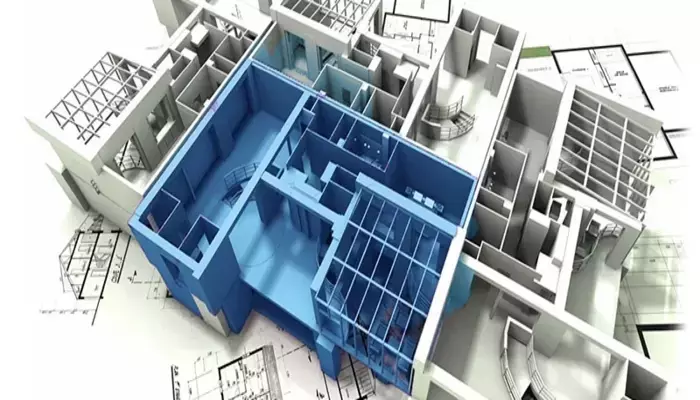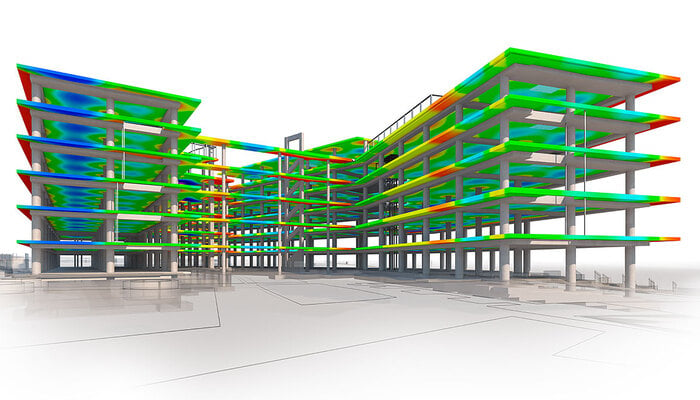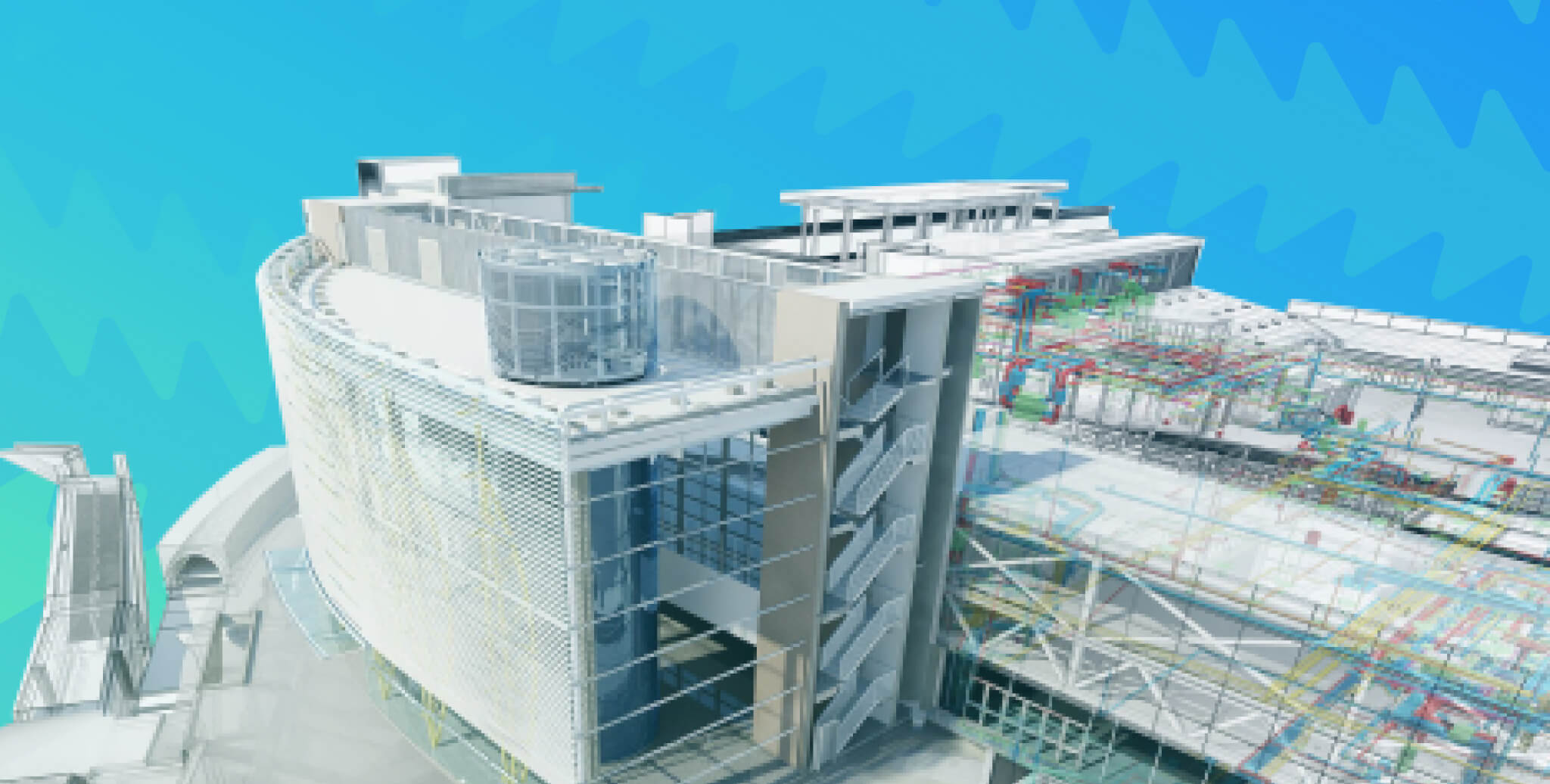BIM for Designing and Construction of Railway Infrastructure: A Comprehensive Guide

Table of Contents
Building Information Modelling (BIM) is an essential tool for engineers and planners, providing them with a comprehensive 3D model of the entire railway network, including all the intricate components like tracks, stations, bridges and tunnels. BIM enables users to detect conflicts and clashes early during the planning phase, saving valuable time and resources and preventing costs because of delays in construction and revisions. In this blog, we will explore the essential role played by BIM in shaping the current and future railway systems. We will delve into the fascinating world of BIM and its transformative impact on railway infrastructure from the design and planning stages to construction, operation and beyond.
What Is Railway Infrastructure?
Railway infrastructure encompasses a wide array of physical components that collectively form the foundation of a railway system, facilitating the safe, and efficient operation of trains. These include tracks, bridges, tunnels, stations, signals, signage, electrification, rail yards, switches, crossings, fencing, security measures, communication and signalling systems, and maintenance facilities. Rolling stock, including locomotives, passenger cars, and freight wagons, are also essential. The complexity and scale of railway infrastructure can vary significantly based on factors such as the type of railway (e.g., commuter, freight, high-speed) and regional and operational requirements. The continuous maintenance and upgrading of railway infrastructure remain imperative to ensuring rail transportation systems' safety, efficiency, and reliability.
Use Of BIM In Railway Infrastructure
BIM is a versatile tool that has transformed railway infrastructure development. It provides efficiency, precision and sustainability in designing and planning. In this section, we will explore seven key aspects where BIM has transformed the railway infrastructure development contributing to the success of the vital transportation system.
1. Design and Planning
BIM for railway engineers and planners is used to create a detailed 3D model of the entire railway infrastructure, including tracks, stations, bridges, tunnels, and other components. This visualisation by the 3D model helps in a better understanding of the project's scope and design. BIM software can identify clashes or conflicts in design early in the planning phase. This helps prevent issues that could lead to costly construction delays and revisions.
2. Cost Estimation and Budgeting
BIM for railways can automatically generate quantity takeoffs based on the model, helping project managers estimate costs more accurately. BIM software can visualise cost data, allowing project stakeholders to understand how different design choices impact the budget.
3. Construction Management
BIM for railways can simulate construction phases, helping project managers plan and sequence construction activities more effectively. BIM can be used to allocate resources such as labour and equipment efficiently. BIM can track the actual construction progress against the planned schedule, enabling early identification of delays or issues.
4. Asset Management and Maintenance
BIM for railways can serve as a digital twin of the railway infrastructure. It contains information about all components, materials, and equipment, making it a valuable resource for maintenance teams. BIM can be integrated with sensor data and maintenance schedules to predict when elements might require maintenance or replacement. BIM can be used to optimise railway operations by providing real-time data on track conditions, signalling, and other critical systems.
5. Safety and Risk Assessment
BIM for railways can simulate various scenarios to assess safety risks and develop mitigation strategies. It can aid in emergency planning and evacuation procedures by providing a detailed model of the railway infrastructure.
6. Stakeholder Communication
BIM for railway models can be used to communicate the project's progress and design to stakeholders, regulatory agencies, and the public more effectively. BIM facilitates collaboration among various stakeholders, including designers, engineers, contractors, and operators.
7. Sustainability and Environmental Impact
BIM for railways can be used to optimise the railway's energy consumption by simulating different operational scenarios. It helps assess the environmental impact of the railway project, including factors like noise pollution and carbon emissions.
Also Read : Top 10 BIM Software for Civil Engineers (2025)
Benefits Of BIM For Railway Infrastructure
Building information modelling (BIM) offers an extensive approach to building railway infrastructure projects, providing advantages across the whole project lifecycle. BIM for the railway industry allows for improving efficiency by reducing costs, minimising hazards, and supporting sustainability initiatives, from improved design and construction coordination to continuing maintenance and operation.
BIM for railway infrastructure projects is used to enhance design, construction, coordination, and ongoing maintenance, ultimately leading to more efficient, cost-effective, and sustainable rail networks. Here are six case studies highlighting the implementation of BIM in railway infrastructure projects around the world:
Improved Design and Visualisation: A precise and comprehensive visual representation of the entire railway infrastructure is provided by BIM via detailed 3D models. Designers and project stakeholders can better comprehend the project's scope, spot design flaws, and make informed decisions early in the planning phase.
Enhanced Coordination: BIM facilitates coordination among various project stakeholders, including architects, engineers, contractors, and suppliers. Clash detection tools in BIM help identify and resolve design conflicts and coordination issues, reducing errors and rework during construction.
Cost Estimation and Control: BIM enables accurate quantity takeoffs and cost estimations based on the model's components and materials. Project managers can use BIM to track costs throughout the project's lifecycle, helping to stay within budget.
Efficient Construction Management: BIM supports the simulation of construction phases, enabling project managers to optimise construction sequencing and resource allocation. Real-time progress tracking helps identify delays or deviations from the schedule early, allowing for timely adjustments.
Environmental Impact Assessment: BIM can simulate various construction scenarios to assess and mitigate environmental impacts, helping projects meet regulatory requirements. It aids in the design of more sustainable railway infrastructure by optimising energy use and minimising ecological disruption.
Stakeholder Communication: BIM models can be shared with stakeholders, including government agencies, communities, and the public, to provide transparent project updates and address concerns. Effective communication enhances public support and regulatory compliance.
Safety and Risk Assessment: BIM can simulate safety scenarios, helping assess and mitigate risks during construction and operation. Emergency planning and evacuation procedures can be tested using BIM, enhancing safety preparedness.
Operational Efficiency: Railway operators can use BIM to monitor and optimise track conditions, signalling systems, and other critical components, ensuring smooth and safe operations. Real-time data from BIM models can improve decision-making and maintenance scheduling.
Also Check : What is BIM for Civil & Structural Engineers, and How Do They Benefit From It
Implementation Of BIM In The Railway Infrastructure
BIM for railway infrastructure projects is used to enhance design, construction, coordination, and ongoing maintenance, ultimately leading to more efficient, cost-effective, and sustainable rail networks. Here are six case studies highlighting the implementation of BIM in railway infrastructure projects around the world:
1. Phase IV Delhi Metro Rail Corporation, Delhi, India
Project Overview: The Phase IV project of the Delhi Metro Rail Corporation (DMRC) includes the building of new metro lines, extensions to current ones, and the incorporation of new stations. This 103.93 km corridor is projected to be finished by 2024, providing last-mile connectivity to locals.
BIM Implementation: The Delhi Metro Phase IV project has successfully implemented Building Information Modelling (BIM) which has resulted in optimised model design, increased collaboration, and digitised design-to-execution workflows. The implementation of BIM has allowed multi-disciplinary project stakeholders to remotely collaborate during the pandemic. This has led to a reduction in project duration and construction costs by 33%, while also increasing labour productivity by 43%. Moreover, BIM has significantly reduced greenhouse gas emissions in the built environment by 50%, by taking into account categories such as design, safety, finance, and schedule. Overall, the use of BIM has minimised construction risks during the design phase and has contributed to a more efficient and sustainable project outcome.
2. Crossrail, London, United Kingdom
Project Overview: Crossrail, also known as the Elizabeth Line, is a major railway project in London, UK, aimed at creating a new east-west railway connection across the city. It is a 118 kilometres (73 miles) track with multiple underground stations, and extensive tunnelling through densely populated urban areas.
BIM Implementation: The railway network, including tunnels, stations, and tracks, was visualised using BIM models. Early design evaluations and conflict detection were made more accessible by this. Real-time monitoring of the tunnelling equipment using BIM helped to ensure that it stayed on course and reduced the chance of ground settling and interruption to the metropolis above. Digital twins of the BIM models made during construction are still used for ongoing asset management and maintenance..png?width=767&height=168&name=BIM-C%20A%20(Course%20Banner).png)
3. California High-Speed Rail, California, USA
Project Overview: California is developing a high-speed rail network known as the California High-Speed Rail Project (CAHSR). Offering a practical and sustainable substitute for air and road travel, it will connect California's major cities, such as Los Angeles and San Francisco. The massive and complex train system for the project raises several engineering, logistical, and environmental challenges.
BIM Implementation: A 3D model of the whole railway system has been designed using BIM software, making it possible for project stakeholders to visualise the design and spot conflicts or collisions in the early design phase. The environmental effects of several construction scenarios have been simulated using BIM to reduce ecological damage. BIM models have also enhanced project scheduling and decreased delays by simulating construction phases, optimising construction sequencing, and efficiently allocating resources. Beyond construction, BIM has helped in asset management, proactive maintenance, and effective operations by creating a digital twin of the railway system.
4. Riyadh Metro, Riyadh, Saudi Arabia
Project Overview: The Riyadh Metro is a massive urban rail project in Riyadh, the capital city of Saudi Arabia. It comprises six metro lines, tracks of a hundred kilometres, and multiple underground and elevated stations which help the city to improve public transportation and reduce traffic congestion.
BIM Implementation: Various rail lines and station designs are coordinated using BIM models, which improve the layouts and ensure that all systems, including Mechanical, Electrical and Plumbing (MEP) are fitted together perfectly. Early conflict detection and resolution through the use of BIM helps avoid rework costs during construction. Asset management systems and BIM models are connected to enable continuous maintenance and operations. BIM also helps to improve project efficiency and coordination, contributing to the successful execution of a complex urban rail network. The digital twin model improves long-term asset management, ensuring the metro system's reliability and safety.
5. Thameslink Programme, London, United Kingdom
Project Overview: The Thameslink Programme in London is a significant railway infrastructure project that involves the enhancement of rail services across the city and the construction of new infrastructure aiming to improve transportation capacity and connectivity.
BIM Implementation: BIM has been used extensively in the Thameslink Programme to manage and coordinate the project's many elements. It has helped create a detailed 3D model of the railway infrastructure, making it easier to visualise and assess design concepts. Clash detection and resolution have been streamlined, reducing errors and rework during construction. BIM has also aided in cost estimation and control, ensuring the project remained within budget. The implementation of BIM has improved construction efficiency and coordination across the complex network of rail lines.
6. Melbourne Metro Tunnel, Melbourne, Australia
Project Overview: The Melbourne Metro Tunnel in Australia was built to enhance the city's rail system and is an important component of the city's railway infrastructure. Underground railway lines and stations were constructed to reduce traffic and enhance public transport.
BIM Implementation: BIM has been a cornerstone of the Melbourne Metro Tunnel project. It enabled the creation of detailed 3D models of the underground rail infrastructure, facilitating better design understanding and early issue detection. BIM's capabilities in construction management and resource allocation were utilised to optimise construction sequencing and ensure timely progress. By providing real-time data on critical components, BIM continues to support operational efficiency and maintenance scheduling, contributing to the project's success.
Conclusion
Railway infrastructure is the backbone of efficient and safe rail transportation systems, comprising a complex network of physical components and facilities. Building Information Modelling (BIM) has emerged as a game-changer in the realm of railway infrastructure. Its application in this field brings a multitude of benefits that touch every aspect of a project's life cycle. BIM for railway systems helps with design and planning. It visualises and optimises scope and layout, detects design conflicts, and offers accurate cost estimation. BIM simulates construction phases and tracks progress while mitigating ecological damage.
Incorporating BIM for railway projects like Crossrail in London, California High-Speed Rail, and Riyadh Metro demonstrates its transformative impact on the industry, ensuring project success and building future railway infrastructure. As technology advances and digitalization continues, BIM remains at the forefront of innovation in railway infrastructure development.
If you want to master BIM, Novatr offers you a BIM Professional Course for civil engineers that applies to your industry. You can learn from industry veterans, master 10+ BIM software, and utilise industry workflows by enrolling in the course. You can also work on a capstone project to polish your skills. Explore the course right away..png?width=767&height=168&name=BIM-C%20A%20(Course%20Banner).png)

 Thanks for connecting!
Thanks for connecting!
-1.png)
-1.png)
.png)






